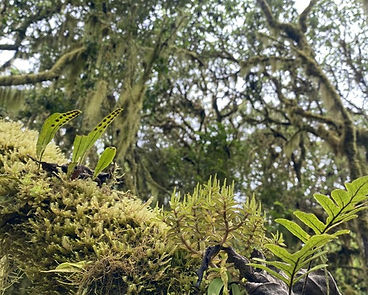

Paula Feldmann «» Germany
The Forest within the Forest: Restoration of Galapagos Phorophyte-Epiphyte Networks.
Biological invasions are a key threat to biodiversity, particularly on oceanic islands where ecosystems are rich in endemic species but highly vulnerable to disturbance. In the Galápagos Islands, invasive plants such as Rubus niveus and Cestrum auriculatum threaten the regeneration of the endemic Scalesia pedunculata forest, a unique ecosystem supporting diverse epiphytic communities. Despite ongoing restoration efforts, little is known about how epiphyte-host networks respond to such interventions.
To investigate the restoration effect on epiphyte-host networks, epiphytes and their host plants were sampled in restored and invaded areas (using a paired-plot design) in the Scalesia forest during a two month stay on Santa Cruz, Galapagaos. The collected data was used to assess ecological complexity and resilience through bipartite network analysis. By comparing 20 quantitative host–epiphyte networks (10 invaded and 10 restored), was possible to analyse key structural metrics such as connectance, nestedness, modularity, robustness, and species strength. Additionally, was also investigated how host identity, origin, and structural characteristics (DBH & moss cover) shape epiphyte diversity, and whether these factors differ between invaded and restored areas. The results provide insights into the restoration of not just species composition, but also the functional community of ecological networks in island ecosystems.




